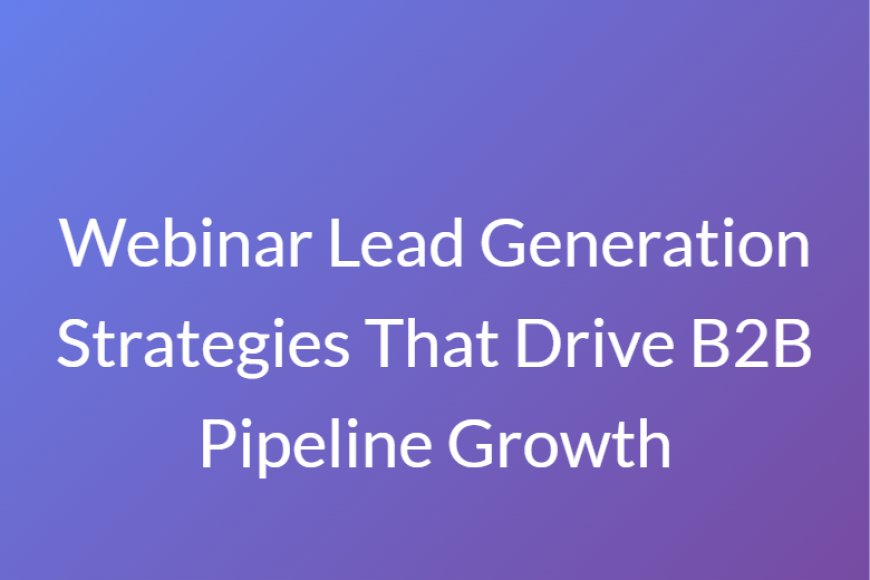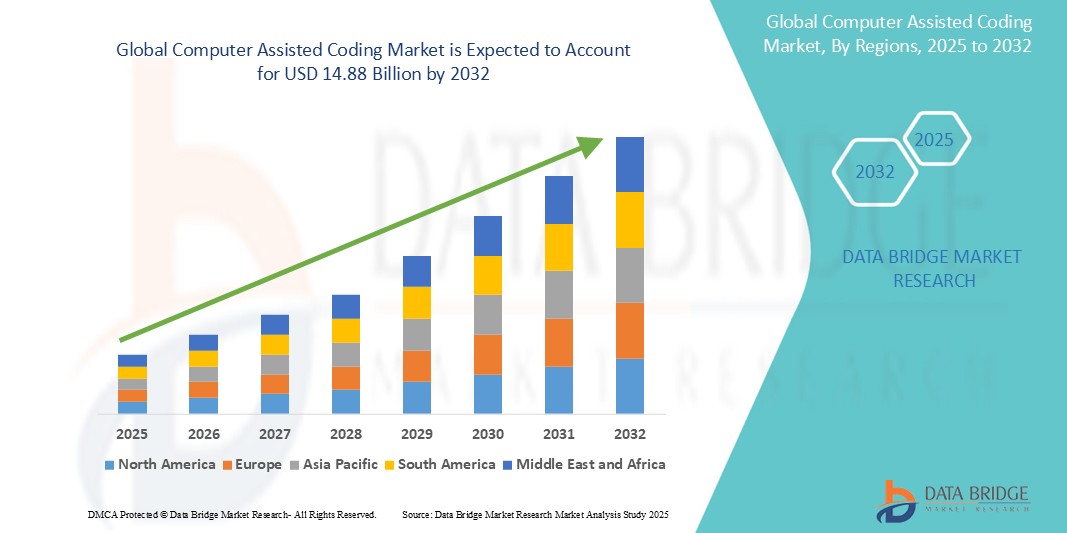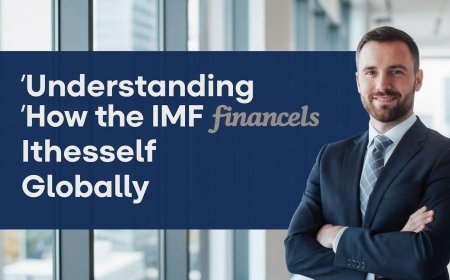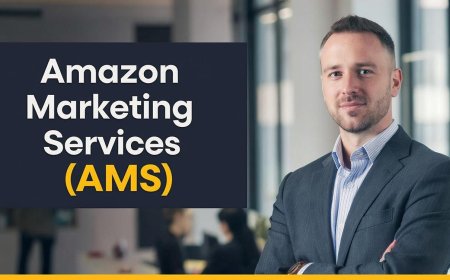Webinar Lead Generation Strategies That Drive B2B Pipeline Growth
The rise of digital-first engagement has made webinars one of the most effective tools in B2B marketing.

The rise of digital-first engagement has made webinars one of the most effective tools in B2B marketing. When used strategically, webinar lead generation strategies can attract highly qualified leads, drive real-time engagement, and create lasting impressions that influence purchase decisions. In a world where buyers prefer value-driven, educational content, webinars give marketers a channel to offer expert insights while capturing high-intent data.
Modern buyers want more than generic ads or gated eBooks. They want experiences that are informative, relevant, and engaging. Thats where Webinar Lead Generation Strategies stand out they combine content marketing, event marketing, and lead qualification into one dynamic format.
Crafting High-Impact Webinar Topics
Every successful webinar starts with a strong topic. For effective webinar lead generation strategies, your topic should strike a balance between trending industry challenges and practical solutions your audience seeks. This ensures that the webinar resonates with professionals actively researching that issue.
Avoid broad or vague subjects. Instead, focus on specific problems your audience is trying to solve. For example, a cybersecurity platform might run a webinar titled, How Mid-Sized Enterprises Can Detect Ransomware in Real-Time. Such specificity attracts decision-makers looking for tangible guidance and filters out low-intent registrants.
Building an Audience-Centric Webinar Agenda
Once the topic is locked in, design the content flow with your audience in mind. Webinar lead generation strategies are most effective when the session is structured to provide immediate value. Start by outlining the pain point, followed by market insights, then a solution framework, and end with a light introduction to your product or service.
Avoid turning the webinar into a sales pitch. The more educational and actionable the content is, the more likely the audience is to trust your brand. Offering templates, frameworks, or real-use cases during the session keeps the audience invested and helps drive post-event conversions.
Leveraging Registration Data for Smart Segmentation
Dont treat your registration form as a basic formality. Webinar lead generation strategies should extract valuable intent data from every sign-up. Include questions like company size, role, budget range, or interest in specific solutions.
This data allows for post-event segmentation, helping you tailor your messaging and sales outreach. Leads with higher intent can be moved into sales-qualified tracks, while others can enter nurturing workflows. The registration phase becomes your first filter in qualifying webinar attendees efficiently.
Email Campaigns that Drive Webinar Registrations
Email remains the most powerful channel for webinar promotion. For effective webinar lead generation strategies, your email cadence should build anticipation and reinforce value. Start with a personal invitation, followed by a reminder series that highlights what attendees will gain.
Use personalization tokens in subject lines and body copyreferencing the recipients industry, location, or challenges can significantly boost open rates. Include speaker bios and sneak peeks of the content to position your webinar as a must-attend event rather than just another calendar entry.
Enhancing Reach with Paid and Organic Social Media
While email is essential, social media plays a growing role in B2B webinar lead generation strategies. Platforms like LinkedIn, Twitter, and YouTube offer avenues to reach broader audiences and tap into niche communities.
Use short video clips or speaker highlights to promote your webinar organically. On paid social, target audiences based on job title, industry, and interests. LinkedIns Lead Gen Forms can simplify the registration process by auto-filling data, improving sign-up rates.
Timing is keyrun your campaigns at least two weeks in advance and increase frequency as the event nears. Add social proof such as testimonials from past attendees to establish trust.
Using In-Session Engagement to Qualify Leads
A major advantage of webinars is real-time interaction. Polls, surveys, chat, and live Q&A provide engagement opportunities while offering insight into lead behavior. Webinar lead generation strategies that include these elements are more likely to surface high-intent buyers.
For example, if a prospect answers a poll about budgeting timelines or clicks on a product link during the session, that interaction becomes a valuable signal. Sales teams can use these signals to tailor outreach, making conversations more relevant and timely.
Use moderators to guide interaction, gather questions, and encourage participation. An engaging webinar experience often translates into higher lead conversion later in the sales cycle.
Post-Webinar Follow-Up That Converts
Your webinar might last 45 minutes, but the follow-up process should last much longer. The best webinar lead generation strategies continue the conversation beyond the event. Send a thank-you email immediately, include the recording link, and offer additional resources such as whitepapers or guides related to the topic.
Segment leads based on their behavior: attendees who asked multiple questions should receive personalized outreach, while those who left early might be re-engaged with follow-up content. Use automation to enroll leads into nurturing workflows based on their interests and readiness.
Time your follow-ups strategicallywaiting too long causes interest to fade, while timely communication strengthens the prospect-brand connection.
Repurposing Webinar Content for Ongoing Lead Capture
Your webinar content is valuable long after the event ends. One of the most scalable webinar lead generation strategies is to turn your session into evergreen assets. Trim the recording into short, digestible clips for social media. Summarize the session into blog posts and email newsletters.
You can also create gated content, such as an on-demand replay page or a companion eBook, to capture additional leads over time. Repurposing extends the shelf life of your webinar and helps you continue generating qualified leads without hosting new events.
Integrating Webinar Data with Your CRM
The final step in any successful webinar lead generation strategy is data integration. Make sure your webinar platform connects to your CRM and marketing automation system. This ensures that every registration, engagement, and post-webinar action is recorded and accessible for lead scoring.
With proper tagging and segmentation, you can trigger automated workflows, sales alerts, and campaign retargeting. The more seamless the integration, the more accurately your team can track conversions and optimize future webinar efforts.
Read the Full Blog Now @ https://acceligize.com/featured-blogs/b2b-webinar-lead-generation-strategies-to-attract-high-quality-leads/
About Us
Acceligize is a global leader in B2B demand generation and sales enablement, specializing in connecting businesses with highly targeted, ready-to-engage prospects. Through innovative digital marketing strategies, buyer intent data, and multi-touch campaigns, Acceligize empowers sales and marketing teams to drive growth, generate qualified leads, and achieve faster revenue outcomes. With a focus on accuracy, engagement, and scalability, Acceligize delivers real, measurable results to enterprises across industries.































